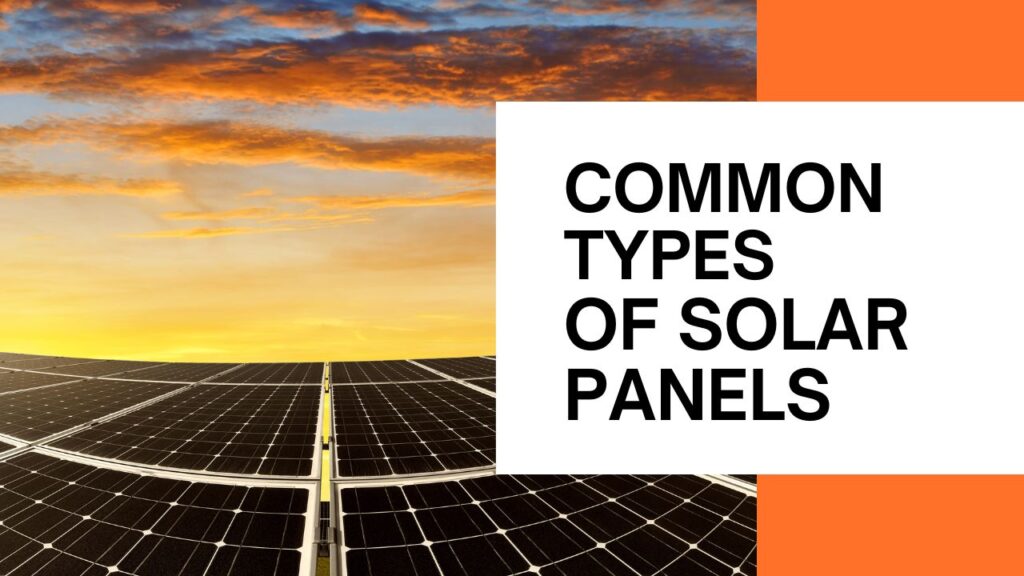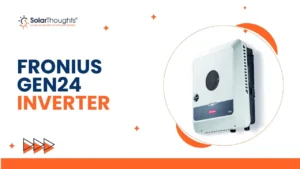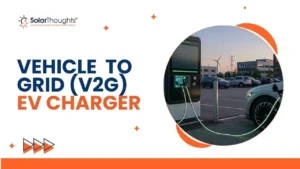Introduction
If you’re considering installing solar panels, one of the first decisions you’ll need to make is what type of solar panels to use for your system. Today’s market features a number of mainstream solar panel technologies, each with unique attributes. In this article, we provide an overview of the most common types of solar panels along with their key features and applications for residential or commercial use. Major panel types include:
Table of Contents
Toggle
1. Monocrystalline Solar Panels
Monocrystalline solar cells represent the oldest but also most efficient panel technology available today. Key defining features include:
High Efficiency Conversion
Made from cylindrical silicon ingots of exceptionally pure crystal structure, monocrystalline PVs reliably convert over 20% of incoming sunlight into usable electricity.
Space Efficiency
With the highest rated cell efficiency, monocrystalline panels produce more power per square foot than any other panel type. They work well even in tight spaces.
Performance Consistency
Tight silicon crystal structure creates electrical flow consistency for reliable, steady power production in all conditions.
Long Lifespans
Durable construction offers lifespan over 25 years. Gradual output declines by no more than 0.5% per annum over decades of operation.
With superb space-efficiency and electrical output, monocrystalline PVs work well on space-constrained rooftops or to meet high energy demand. The tradeoffs come in the form of premium pricing along with an all-black aesthetic some homeowners dislike.
2. Polycrystalline Solar Panels
Offering a more balanced performance and economic profile, polycrystalline solar technology continues gaining mainstream popularity as follows:
Affordable Pricing
Relaxed silicon purity requirements cut manufacturing costs substantially compared to monocrystalline products. This makes poly PVs ideal for homeowners on tight solar budgets.
Sufficient Efficiencies
Typical polycrystalline solar efficiencies range from 15-18%, lagging only slightly behind monocrystalline models for reasonably strong output.
Visually Appealing
Light blue coloration and crystalline cell structure offer visual pop for homeowners valuing aesthetics.
For budget-focused installers willing to sacrifice a bit of efficiency and space-savings for cost benefits, polycrystalline panels give excellent general performance.
3. Thin-Film Solar Cells
Thin-film represents the third major solar panel category, defined by ultra-slim flexible constructions rather than bulky glass-encased silicon crystals. Two thin-film subtypes dominate:
Cadmium-Telluride (CdTe)
Offering production efficiencies approaching polycrystalline levels at just a fraction of the thickness, CdTe thin film solar panels work very well in hot climates thanks to heat insensitivity.
Amorphous Silicon (A-Si)
The lowest efficiency thin-film tech still finds applications like RVs, calculators, and building-integrated installations where flexibility and slim form factor outweigh output considerations.
With adaptable form factors unavailable from crystalline silicon panels, thin film solar fills specialty niche applications. The technology continues maturing toward competitive residential viability.
FAQ
What are the most efficient types of solar panels?
Monocrystalline solar panels reign supreme in conversion efficiency, able to reliably transform over 20% of incoming sunlight into usable electricity. This gives them impressive per-square-foot productivity.
Which solar panel type is most affordable?
Thanks to relaxed silicon purity requirements, polycrystalline solar panels offer the most appealing balance of performance and affordability the market. They make going solar cost-effective.
What solar panels work best with limited roof space?
If your roof area limits total solar array size, prioritize highly space-efficient monocrystalline PVs to maximize your system’s achievable power output given tight physical footprint constraints.
Which types of panels are the most visually appealing?
With eye-catching light blue cell coloring and visible crystalline structure, many homeowners prefer the aesthetics of framed polycrystalline panels over the all-black monocrystalline variety or plain thin films.
Conclusion
While specialty panel varieties continue emerging for niche applications, mainstream solar reliables on monocrystalline, polycrystalline and thin-film panel constructions. With an understanding of each technology’s strengths and target uses, you can make an informed solar decision for your home or business. Carefully weigh electrical output, longevity, pricing, visual appeal and physical footprint considerations for your property.






